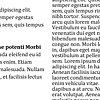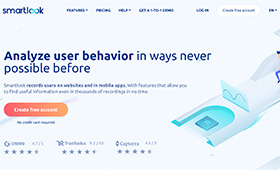10 Quick Wins to Improve User Experience
At its core, a business’ website is the online representation of that particular brand. In today’s digital age, the website is often the first interaction many people will have with your business. It should come as no surprise that websites have the ability to leave a lasting impression on customers.
This impression can easily change towards the positive or the negative. Therefore it’s important to ensure that every aspect of your website is optimised with the user in mind. Luckily, many factors can change the scales.
Although we know that user experience is important, it is often overlooked in favour of other aspects of the website. Visual design may be the primary focus as it is the outward face of your brand, but many people forget that the two are interlinked. It’s difficult to have a successful website with great visual design but lack a great user experience and vice versa.
User experience is important because it focuses on the site as a whole. Whether it is designing the look of the website, ensuring the site is accessible and easy to navigate, or integrating the brand’s presence across social media, the user experience is vital to a website’s success.
With so many things to think about, it can be easy to fall into the trap of perfecting one part while neglecting other aspects when improving the user experience. Often it’s better to implement many smaller fixes, improvements and quick wins rather than focusing on one major issue at a time.
Not sure where to start? Here are ten quick wins you can use to improve your user experience.
#1 Surveying Users
The first point in our list of quick wins is about knowing your users. How do you know what users want from your site if you don’t ask them? A little survey can go a long way towards helping you understand the wants and needs of the people who visit your website.
Popular times to survey customers would be during the browsing process, after purchase, or by sending out a survey to email subscribers. You could even encourage people to participate by offering a small incentive to thank them for helping out.
While surveying customers won’t improve the user experience in itself, it’s still well worth investing your time into it. The results will act as a to-do list to improve your user experience, already tailored to your user’s exact requirements.
One survey, called the System Usability Scale, is specifically designed to find out how visitors perceive the usability of your website. It’s also unbelievably easy to implement.
#2 Purpose
Similarly, one of the keys to great user experience is research. You may have established what users want from your site, but have you worked out the specifics of what you want to establish?
A website without a clear purpose is not conducive to good user experience. If visitors are left unclear about what your site is trying to achieve, how can their experience be optimised?
Before working on any other aspect of your website, you should decide on your website’s primary purpose. The purpose can vary from selling a product to informing and even inspiring people. Create a concept and use it consistently.
#3 Page Speed
While integrating a responsive design certainly isn’t the best fit for our list of quick wins, page speed is one aspect that is absolutely crucial. If your website takes more than a few seconds, either on desktop or mobile, you could face losing customers.
According to a September 2016 Google report, 53% of mobile users abandon websites which take longer than 3 seconds to load, proving the importance of speedy loading times once and for all.
There is a certain expectation regarding page speed and loading times. The slower your site, the more frustrated users will become. This will lead to an increased bounce rate and fewer conversions which, over time, can have a real negative impact on success.
#4 Design & Layout
Web design is highly complex and subjective, but good design and layout can work wonders. There are certain aspects of web design which directly relate to the user experience, one being the text to image ratio. This will vary depending on the individual site. Trial and error might be the best way to determine what works best for you.
Another factor to keep in mind is the use of white space on a page, also called negative space. White space is basically the space between elements in a composition. When used correctly, it will deliver a layout that is easy on the eyes and more balanced. It improves legibility, interaction and even acts as a guidance. All these points add up to create a significant impact on user experience.
#5 Readability & Accessibility
Similarly to the above point, readability and accessibility are also important things to consider. Whether it is incorporating foreign language capabilities into your website’s design (although this can hardly be classified as a quick win!) or how you divide content on each page, improving readability can be an incredibly easy way to develop a stronger user experience.
Quick wins to improve the readability of a site include adding bullet points or headings in order to break up large chunks of text.
I already mentioned white space. White space is not only used in pure graphical terms; you can also use it to split up large amount of text into multiple paragraphs. This little trick will improve readability and makes the text easier to scan.
One last point is to pay attention to font sizes, line lengths and letter spacing.
#6 Calls to Action
Calls to action are an incredibly important element of any website promoting a particular product or service. However, too many obvious calls to action can leave a site looking too spammy or sales-oriented, decreasing user’s trust in the site and leaving them less likely to do what you want them to do.
Instead, a few well-placed and carefully thought-out calls to action will probably end up doing the desired job much better. Similarly, you should avoid including too many conflicting calls to action. Focus on your primary goal (buy a certain product, get in contact, subscribe to a newsletter etc.). Everything in the page’s design and user experience should complement this call to action and subtly work towards getting users to complete the desired action.
#7 Images
Images are a web designer’s best friend – when they are used correctly. The old problem of too many or too few images can still come into play, but in today’s digital age, consumers are getting increasingly faster at judging websites based on their images.
Poor quality images or frequently-used stock images are likely to be overlooked. Images are also used as a factor when it comes to deciding whether a company is reputable and trustworthy.
Some other quick wins regarding images, would be to optimise its dimensions and file size. Adapt the images to the used screen size and do not integrate text inside the image itself. The content might be readable on big screens, but probably not on mobile phones. In order to reduce the file size, run the images through an image compressor tool.
#8 Graphics
Not to be confused with images, graphics are another key part of the user experience. From logos to banners and so much more, graphics are one of the best tools in your arsenal when it comes to personalising your website.
Good-quality graphics have the potential to offer a real boost to your site. They are also incredibly versatile, easily able to be repurposed for your brand’s social media channels, ad campaigns and much more.
You should ensure that all of the graphics that you use follow the same design theme in order to promote brand identity across the board.
#9 Social Media Integration
Speaking of social media, integrating your website and your business’ social media channels is a great way to cross-promote content, develop a larger consumer base across the board, and improve the user experience through greater engagement.
Getting users involved with your brand is one of the best ways to engage with them – and there is no better platform for this than social media.
#10 Consistency
Last but definitely not least in our list of quick wins is consistency. In fact, consistency is one of the most important ways to improve the user experience. A consistent approach to all of the aspects mentioned above can lead to increased happiness and trust among users, vital for the continued growth and success of your website.
One way of ensuring consistency is the use of style guides. They can include graphical elements and UI patterns but also other concepts such as tone of voice. Whenever you’re optimise an existing feature and create a new one, use the elements as described in the style guide.
Concluding
The significance of the user experience simply cannot be ignored. It’s absolutely vital to ensure the best overall experience for each visitor. These quick wins are the ideal starting point to improve the usability, the interaction, the perception and overall user satisfaction of your website. Sometimes, the little things make a big difference.
If you are more interested in UX design techniques, we do have an article about that as well!







No responses yet to “10 Quick Wins to Improve User Experience”